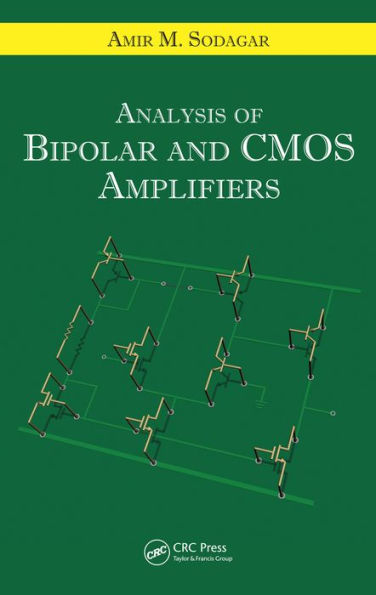The classical approach to analog circuit analysis is a daunting prospect to many students, requiring tedious enumeration of contributing factors and lengthy calculations. Most textbooks apply this cumbersome approach to small-signal amplifiers, which becomes even more difficult as the number of components increases. Analysis of Bipolar and CMOS Amplifiers offers students an alternative that enables quick and intuitive analysis and design: the analysis-by-inspection method. This practical and student-friendly text demonstrates how to achieve approximate results that fall within an acceptable range of accuracy and are based on sound scientific principles. Working from the basics of amplifiers and transistors to biasing, single- and multistage amplifiers, current sources and mirrors, and analysis at midband, low, and high frequencies, the author demonstrates the interrelationship between behavior in both the time and frequency domains and balances the discussion between bipolar and CMOS circuits. Each chapter closes with a set of simulation examples in SPICE and MATLAB® that give students hands-on experience applying the concepts and methods using industry-standard tools. Building a practical working knowledge around a solid theoretical framework, Analysis of Bipolar and CMOS Amplifiers prepares your students to meet the challenges of quick and accurate approximations and software-based analysis awaiting them in the workplace.
1128478630
Analysis of Bipolar and CMOS Amplifiers
The classical approach to analog circuit analysis is a daunting prospect to many students, requiring tedious enumeration of contributing factors and lengthy calculations. Most textbooks apply this cumbersome approach to small-signal amplifiers, which becomes even more difficult as the number of components increases. Analysis of Bipolar and CMOS Amplifiers offers students an alternative that enables quick and intuitive analysis and design: the analysis-by-inspection method. This practical and student-friendly text demonstrates how to achieve approximate results that fall within an acceptable range of accuracy and are based on sound scientific principles. Working from the basics of amplifiers and transistors to biasing, single- and multistage amplifiers, current sources and mirrors, and analysis at midband, low, and high frequencies, the author demonstrates the interrelationship between behavior in both the time and frequency domains and balances the discussion between bipolar and CMOS circuits. Each chapter closes with a set of simulation examples in SPICE and MATLAB® that give students hands-on experience applying the concepts and methods using industry-standard tools. Building a practical working knowledge around a solid theoretical framework, Analysis of Bipolar and CMOS Amplifiers prepares your students to meet the challenges of quick and accurate approximations and software-based analysis awaiting them in the workplace.
170.0
In Stock
5
1

Analysis of Bipolar and CMOS Amplifiers
411
Analysis of Bipolar and CMOS Amplifiers
411Related collections and offers
170.0
In Stock

Product Details
| ISBN-13: | 9781351835695 |
|---|---|
| Publisher: | CRC Press |
| Publication date: | 10/08/2018 |
| Sold by: | Barnes & Noble |
| Format: | eBook |
| Pages: | 411 |
| File size: | 17 MB |
| Note: | This product may take a few minutes to download. |
About the Author
From the B&N Reads Blog
